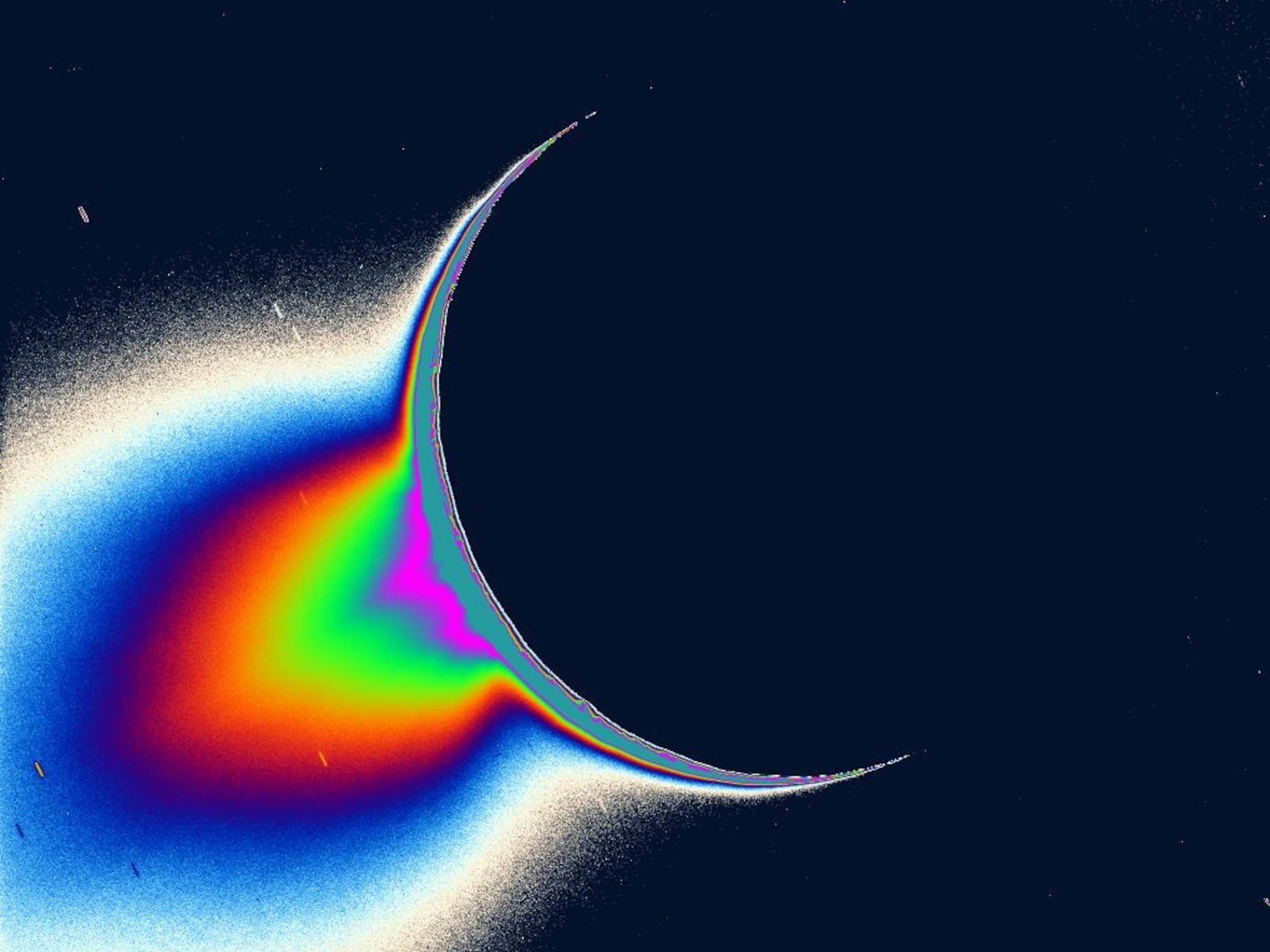
Cracking the Secrets of Old Faithful's Geyser Eggs
Researchers get their first look at a geological 'gobstopper' from Yellowstone, which may hold clues about its iconic geyser's past and future.
The animal kingdom brims with egg-laying creatures—chicken, goldfish, toads, and more. But one thing you might not expect to lay an egg is a geyser.
Geyser eggs don't spawn a swarm of baby steam-sputtering structures; they are, after all, rocks. But they're far from ordinary: These pebbles are like geologic gobstoppers. They solidify layer by layer as silica from the steamy waters of geothermal pools precipitate out of solution, making each layer a snapshot of pool conditions at the time it was formed.
A trove of these geologic oddities lies scattered in the colorful thermal pools surrounding Yellowstone's Old Faithful geyser, yet strong protections within the national park have long prevented scientists from getting their hands on the eggs. But recently, for the first time, a team of geologists were allowed to remove a single “Old Faithful” egg. Their analysis of the bean-shaped pebble, which is roughly the size of a silver dollar, provides new insights into the egg's delicate structures and could provide clues to how Old Faithful changes overtime.
“It is amazing to think that these little rocks capture and preserve the history of the discharging fluid for as long as it is growing,” says study author Bridget Lynne of the University of Auckland.
The study was conducted in conjunction with a National Geographic-funded project focused on teasing out near-surface geyser features.
Rocks Around the World
Geyser egg analysis could also holds the secrets to early life, explains Brian Jones, a geologist from the University of Alberta who was not involved in the study. Some scientists posit geysers fostered some of the earliest cellular forms, which means studying similar eggs could help researchers untangle how life first arose.
“There's always that potential; [it's] what we're aiming for,” says Jones, who has studied geyser eggs from all over the world. “Whether we'll ever get there is a different question.”
The Golden Egg
Though scientists have long known geyser eggs exist, they still conceal many questions within their smooth, curvy sides. Why do they form? How quickly do they take shape? What information does each layer hold?
Part of the problem in studying geyser eggs is that while geysers and the thermal pools they create are rare geological features, geyser eggs are even rarer, says Duncan Foley, study author and a geologist at Pacific Lutheran University.
Old Faithful's thermal pools, however, are surprisingly rife with geyser eggs. “This was the largest collection of these rare rocks I have seen in my scientific career,” says Lynne. “For me, this added a new dimension to the iconic status of Old Faithful geyser.”
To study the precious Yellowstone egg, the researchers sliced it in half and subjected it to a battery of tests to determine its composition and structure. Among the many tests were CT scans, as well as bombarding the interior layers with beams of electrons and X-rays to tease out minute structures.
Layered Details
The egg contains concentric rings of varying density and composition. “We're seeing what are probably changes in the chemistry of the geyser waters through time,” says Foley. As geyser eggs grow, they're “actively recording” any shifts in elemental composition, Lynne explains, adding that the changes in density may reflect cyclical changes like the frost and thaw of passing seasons.
But what do these changes mean for Old Faithful's plumbing? The answer is complicated.
The famous geyser's waters collect in a large underground tea-pot shaped chamber before periodically erupting, but they first travel through a web of underground crevices. Along the way the roiling waters—which reach temperatures over 350 degrees Fahrenheit—dissolve nearby minerals, changing the chemistry of the water.
But how those twists and turns change through time remains a mystery, says Jones. “ It's very difficult to trace that water.”
What Came First: The Microbe or the Egg?
Generally speaking, the process of geyser egg formation is similar to making hard candy, says Foley. Candy makers must heat sugary water to high temperatures, dissolving much more of the sweet stuff than colder water could handle. Then, as the solution cools, the sugar begins to crystallize.
Similarly, thermal pools are periodically refreshed with hot, mineral-rich water when nearby geysers erupt. As the solution cools, the minerals may slowly precipitate and cling to whatever is available—and sometimes that takes the form of eggs. But thermal pools also contain microbes which could also enhance the growth.
How fast the eggs form, however, remains unknown. Unlike the rings of a tree, geyser egg layers probably aren't annual, says Jones. His 2001 analysis of trapped pollen grains in New Zealand geyser eggs suggest the egg layers grow at roughly 0.35 mm per year. But it's a mystery whether this holds true for geyser eggs from other regions.
With just a single sample in this latest study, it's hard to draw many definitive conclusions. “When you've only got one of something … you never know if it's typical,” Jones says. But he's quick to add: “I can't fault the authors for that; they did well to get one.”
“It was truly a privilege to be allowed access to this site and to be able to sample the geyser eggs,” says Lynne. Not only could the new study help preserve the iconic Old Faithful, it marks one more step toward cracking the geyser eggs' secrets.























